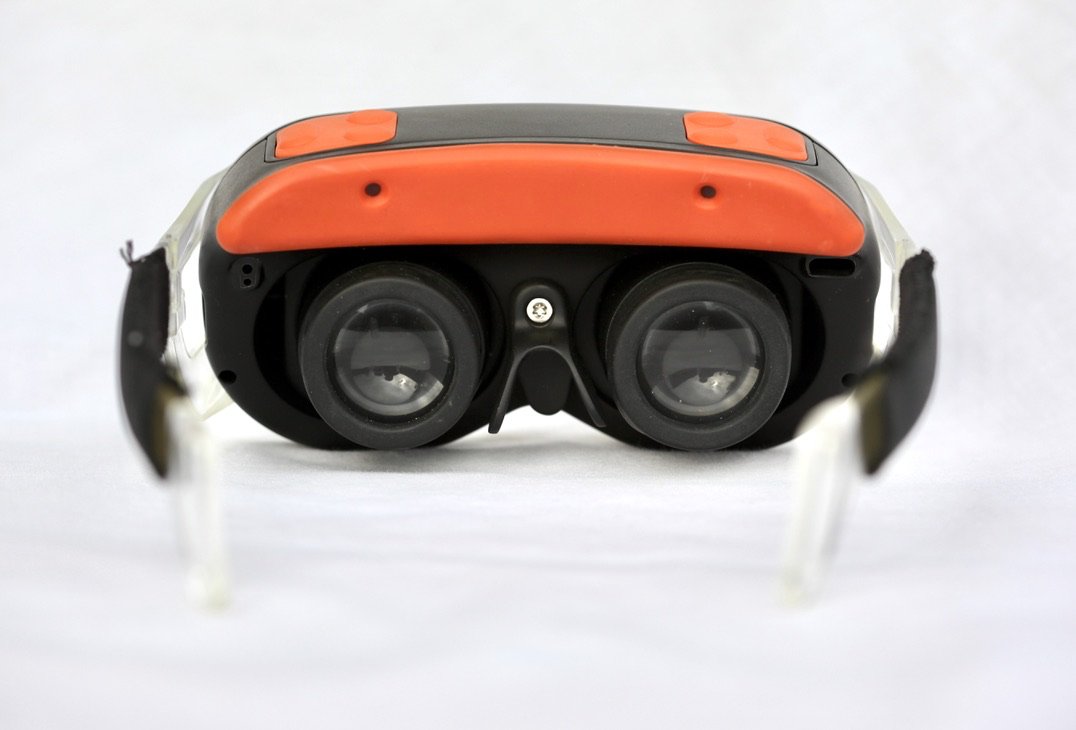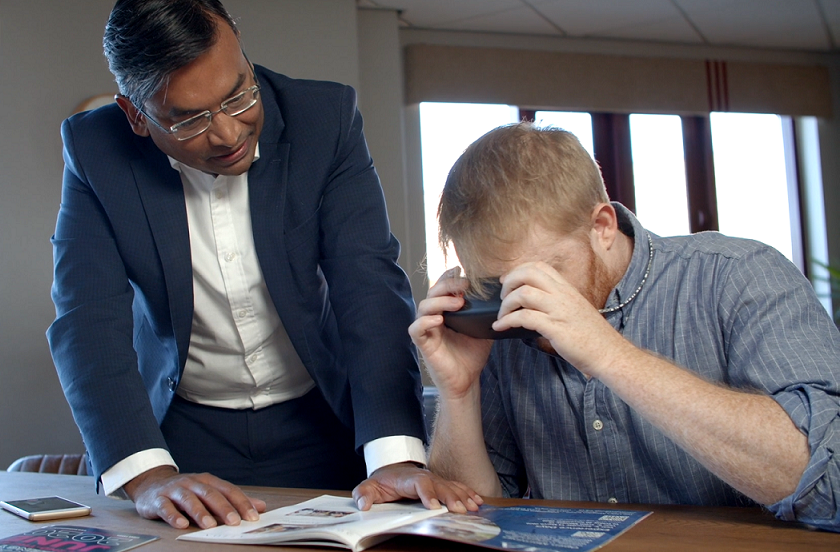Q&A with Dr Stephen Hicks

Dr Stephen Hicks
Last month, DO Online reported on the development of Oxsight Onyx second generation smart glasses for people with central vision loss. In a Q&A with Oxsight co-founder, Dr Stephen Hicks, we find out more about this game-changing technology for the visually impaired – and hear the first-hand experiences of a trial participant.
Q. How and why is Onyx unique to Oxsight? What makes it different from other smart glasses on the market?
A. Most smart glasses on the market have relatively small screens and are mainly suited to people with central or tunnel vision. Onyx has been designed specifically for people with central vision loss. The glasses have large screens, which can magnify hard-to-see objects like text and small objects. Most importantly, Onyx is light, small, and portable.
Q. How is the tech specifically suited for central vision loss?
A. Onyx can enlarge objects up to eight times, which lets people use their peripheral vision to identify letters, faces, objects and so on. The displays produce a bright, colourful and high contrast image which makes central vision clearer in many cases.
The controls of Onyx are very clear and tactile. Users can freeze an image and enlarge it, and there are various ways to set the brightness, colour and contrast to suit different visual abilities. Onyx can detect faces and bring them into focus, and it uses artificial intelligence to name common household items. The glasses are designed so that the view using the natural remaining peripheral vision is not blocked.
Q. What interesting findings have been discovered from the initial rounds of testing?
A. More than 100 people have trialled Onyx in the last few months and up to 80 per cent of participants reported that they could see faces, objects and text better than before. In the standard letter reading tasks, the average improvement is 0.5 LogMAR. Many of our participants could not read any letters on the chart without Onyx but could read the top three or four lines with Onyx.
Q. What improvements have been made to the tech during the testing stages/from Alpha to Beta devices?
A. We have improved the sturdiness of the device and increased the resolution of the displays to make images even sharper. The software is also more advanced, with easy-to-use image enhancement options. Finally, the controls have been improved to make buttons easy to find, and easy to understand.

Oxsight Onyx smart glasses
Q. How do you expect the technology to evolve further ahead of Onyx coming to market?
A. We are listening carefully to all feedback from our trial participants. We will be making improvements to the software, to simplify the user experience, and look at ways to further improve the cosmetics and form factor of the unit.
Q. What predictions do you have for the wider assistive technology market? Is this area ever-changing, and how is it future-proofed?
A. Wearable displays are a hot area of research. Every year, we are seeing displays become closer to regular glasses and this will be the main area of overall improvement. However, it may be a few more years before smart glasses look like reading glasses, so in the meantime the best option for mobile magnification is something like Onyx. It is compact and easy to use.
Q. How much does affordability impact on the tech used?
A. We know how important it is to match the cost of a device with the benefits that it can produce. Building this device from scratch, we were able to optimise the selection of every single component. The main components, like the processor, battery and displays, are all hand selected to create a great experience while keeping the cost of manufacturing to the absolute minimum. These cost savings are passed straight onto the customer. We are also excited to offer a monthly rental plan to spread the cost and make Onyx more affordable.
Q. What day-to-day impact could Onyx have on people living with central vision loss?
A. By now, we have spoken to hundreds of people with all forms of eye conditions and from this we distilled a long list of the top issues facing people with sight loss. We designed Onyx to help with all but one of these challenges, which is driving. People have used Onyx to help with reading labels in the shops, reading books, newspapers, cards, crosswords and distant objects like signs, watching TV, seeing faces and expressions (both near and far), identifying flowers, finding dropped objects, seeing in low light and much more.
Q. What are the product benefits we should reference e.g. time to charge, duration of use on battery, weight etc?
A. Onyx glasses are extremely flexible. They can be worn as a visor for hours of hands-free operation. In this configuration, people can watch a movie, prepare a meal, do a crossword, or tend to the garden. They can also be used on-demand as a magnifier to help read signs and labels or see friends across the street. For this, we have a simple lanyard that keeps Onyx nearby and ready for action. By giving Onyx different lives, we hope that people can themselves find the best way to gain the benefits they need.
Onyx can be run indefinitely by plugging it into a portable battery, or it can be run completely cable free for one or more hours, depending on usage. It saves power by automatically going to sleep when it is not being used and can be fully charged in about half an hour.
The final weight of Onyx won’t be known until the final design optimisation has been completed, but the basic unit is expected to be between 100 and 150 grams. For people with glasses, we designed it so that Onyx can be used with regular glasses, or without them. It’s up to the user.
Seeing is believing

Nathan trying out the smart glasses with Oxsight CEO, Dr Rakesh Roshan
Nathan Tree, who works for the Oxfordshire Association for the Blind, was one of the first people to trial Oxsight Onyx earlier this year. Nathan has cone rod dystrophy and started losing his vision when he was aged 18.
Nathan said: “Putting on the Onyx glasses was an amazing experience. I could see a lot more detail and I could read, which is something I haven’t been able to do for many years.
“When I was first diagnosed, I didn’t seek help for many years, and it impacted my mental health. I’m now an advocate within the visually impaired community and I support people with sight loss, so it’s great that Oxsight is helping so many people who are going through a similar thing.
“Technology can’t fix lost vision, but these glasses certainly give you a lot more than you have. I’ve recently learnt how to read Braille and with the glasses, I could read infinitely faster. They will make life better for many people.”
Nathan hopes to wear Oxsight Onyx on his wedding day next May to see his wife-to-be in her wedding dress. Nathan has also founded Blind Ice Hockey UK, and intends to champion the sport amongst the visually impaired community in the UK.
To find out more about Oxsight and the technology behind Onyx, visit www.oxsight.co.uk